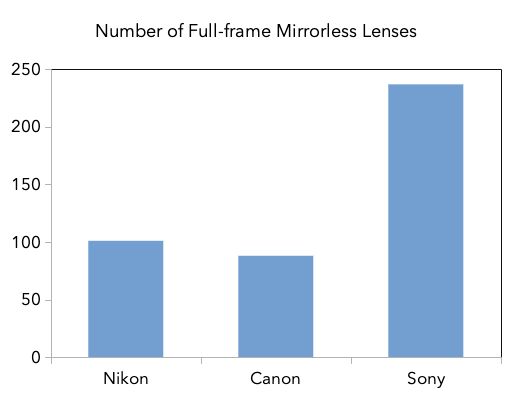L
Loswr
Guest
So you know more about marketing cameras than the company that has led the industry for 20 years. LOL, okidokie.Thats my whole point. Canon is marketing to these people wrong.
Revisionist history is fun. When Sony 'paved the way' into the mirrorless market, Canon was leading the DSLR market in which Sony was failing to be competitive. Why would Canon 'look forward' and abandon a market that comprised the vast majority of ILCs being sold, a market they were leading? It was about a decade until MILC sales overtook DLSR sales.Canon is clearlly not know for looking ahead. Heck they had to go to the mirrorless market kicking and screaming after Sony paved the way.
Incidentally, Sony really didn't 'pave the way' to mirrorless. Epson released the first APS-C MILC back in 2004, followed by Leica in 2006. Then Panasonic and Olympus launched m4/3 MILCs in 2008/2009. Sony didn't enter the MILC space until 2010 with their APS-C NEX line. Given camera/lens development timelines, Canon probably started working on APS-C MILC development about that time.
When Canon entered the APS-C MILC market in 2012, Sony did 'pave the way' into FF MILC cameras. It took about 5 years for the M-series to beat out Sony and become the best-selling APS-C MILC globally (at it's peak, about 17% of all cameras sold worldwide were EOS M). Then in 2018, Canon entered the FF MILC market. Last year, Canon took over for Sony as the #1 overall MILC brand in Japan (and of course, they continue to dominate the ILC market globally).
The real question is where will Sony run to now? They'll probably divest their ILCs as they did with the Vaio line.
Yes, Sony is doing very well with sensors. But what Sony division are you talking about, that is up 45%? If you are referring to Imaging (formally Imaging & Sensing Solutions), you should be aware that cameras are not part of the division, they're currently grouped with Entertainment, Technology & Services. Sony has played the shell game with their cameras, moving them from one division to another several times over the past 5 years. Almost like they're trying to hide something... (From past experience in large companies, senior people with 'pet projects' often have them moved from one division to another, so no one actually figures out how much money the project is losing.)The net sales for this division is less than HALF of what it was a just 8 years ago and yet Sony's division is up 45%. Again because they are making sensors to be put smarthphones and not just cameras.
Upvote
0

